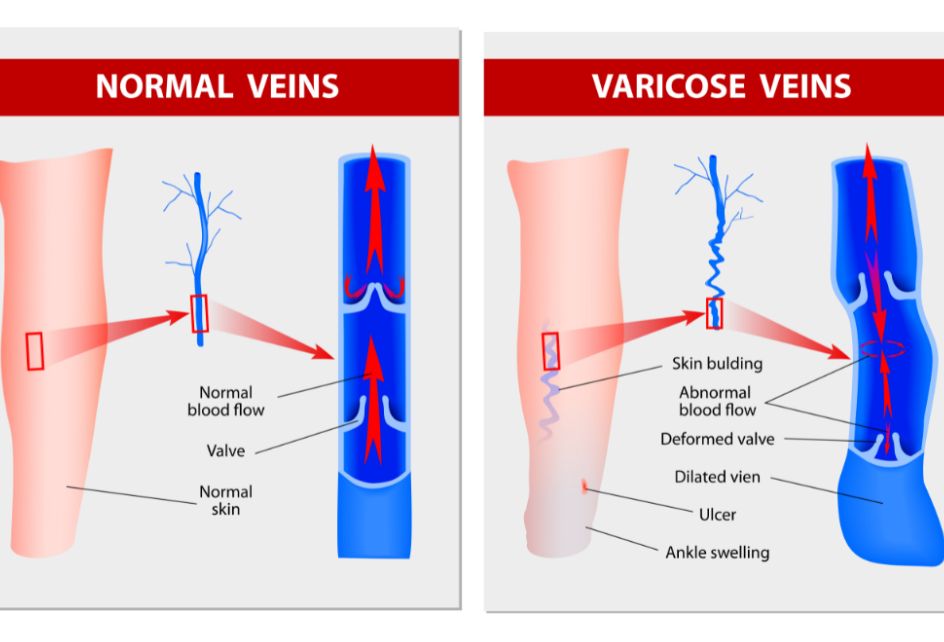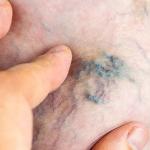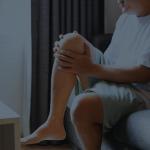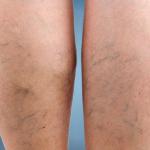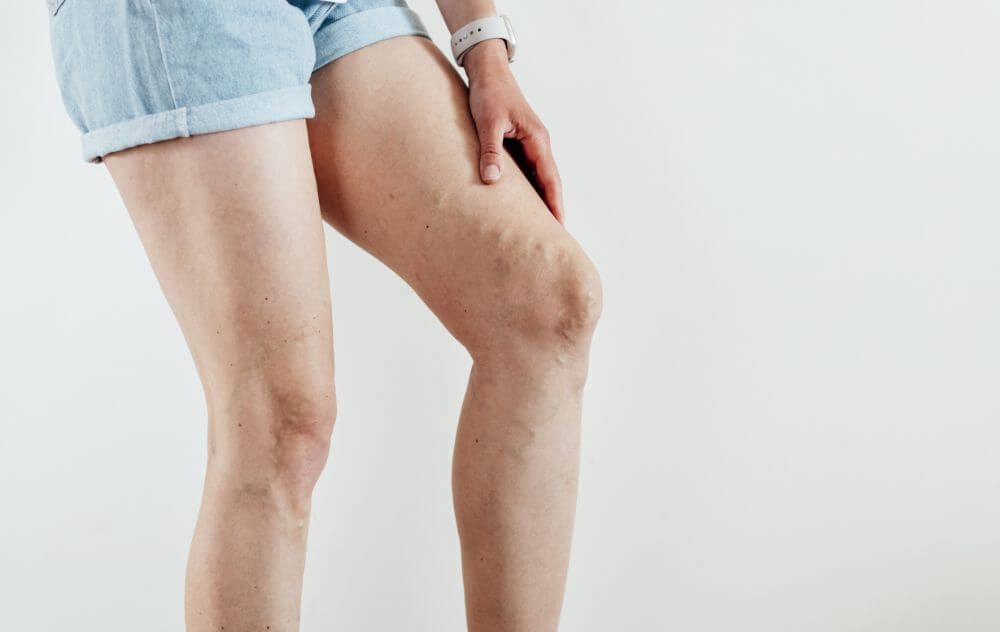
Topics Covered:
- What Is Leg Pain?
- Causes of Leg Pain That Are Not Related to Veins
- Vein Problems That Cause Leg Pain
- Is Your Leg Pain Linked to Veins
- Diagnosing Vein Pain in Legs
- Easing Leg Pain and Treating Veins
Leg pain and discomfort can result from normal wear and tear, aging, or a serious and progressive condition called vein disease—also known as chronic venous insufficiency. Vein disease does not always create symptoms, but when present, they should not be ignored. If left untreated, diseased veins can compromise health and lead to serious and potentially fatal outcomes. If you have leg pain, it could be a sign of diseased veins.
SCHEDULE YOUR CONSULTATION TODAY
What Is Leg Pain?
Leg pain can vary in severity and location, and it can be accompanied by a variety of other symptoms. Some common symptoms that accompany leg pain include:
- Burning
- Tingling
- Heaviness
- Aching
- Pain that is worse at night
- Weakness
- Numbness
- Cramping
These unpleasant sensations can occur unilaterally (on one side) or bilaterally (on both sides), ranging from the upper hip to the feet and ankles.
Dealing with leg pain can be a frustrating and isolating experience, limiting mobility and making activities less enjoyable. If you are experiencing leg pain, it is important to know that you are not alone. There are treatments available to help.
Causes of Leg Pain That Are Not Related To Veins
Many conditions that can cause leg pain aren’t related to veins. The leg is made up of bones, connective tissue (ligaments and tendons), arteries, and veins. Leg pain can be caused by any type of physical or chemical injury that causes nerves to send pain signals to the brain. Causes of leg pain that do not involve the veins include stress fractures, sprains, muscle or joint pain, arthritis, and other conditions.
While some causes of leg pain may be obvious, it is important to listen when your body signals something is wrong. Recognizing the pain is the first step in relieving or resolving the issue. If you have leg pain, speak to a licensed healthcare professional.
Vein Problems That Cause Leg Pain
Vein problems can cause leg pain by interfering with the normal blood flow in the legs. When veins are damaged or weakened, blood can pool in the lower extremities, leading to swelling, pain, and other symptoms.
Some of the most common vein problems that can cause leg pain include:
- Varicose veins: Varicose veins are enlarged, twisted veins that can appear on the skin’s surface. They are caused by weakened valves in the veins that allow blood to flow backward.
- Chronic venous insufficiency (CVI): CVI is a more advanced form of vein disease that occurs when the valves in the veins become so weak that they no longer function properly. This can lead to blood pooling in the legs, causing swelling.
- Deep vein thrombosis (DVT): DVT is a blood clot that forms in a deep vein, usually in the leg. DVT can cause pain, swelling, and other symptoms and should be treated with urgent medical care.
Other common causes of leg pain related to vein disease include:
- Ulcerations
- Skin problems
- Occlusion (blockage)
- Phlebitis
LEARN MORE ABOUT VEIN PAIN AND TREATMENTS
Is Your Leg Pain Linked to Veins?
A vein specialist can analyze your leg pain and assess whether a venous issue is the cause. While most causes of leg pain are mild and may repair themselves, it is crucial to see a vein specialist to rule out any serious problems that could lead to long-term damage or even prove fatal.
If caught early, many venous issues that cause leg pain can be treated with minimally invasive procedures. Symptoms of vein disease may include:
- Twisting, bulging veins visible through the skin
- Swelling in the feet, ankles, and calves
- Heavy-feeling feet and/or legs
- Tired feet and/or legs
- Skin discoloration (blue, red, white)
- Dry, flaky, or itchy skin
- Ulcers (an open wound on any part of the lower extremities)
- Pain in the legs, ankles, or feet
- Legs that are warmer to the touch than other areas of your body
If you are experiencing any of the above symptoms, consult a vein specialist.
SCHEDULE YOUR CONSULTATION TODAY
Diagnosing Vein Pain in Legs
Vein disease can be diagnosed with a physical exam and imaging tests. During the physical exam, the vein specialist will look for signs of varicose veins, swelling, and skin discoloration. They may also check for tenderness in your legs.
Imaging tests can examine the inside of your veins for vein disease. For example, a duplex ultrasound uses sound waves to create images of your veins and measure blood flow. If your doctor suspects you have vein disease, they may order imaging tests to confirm the diagnosis.
Easing Leg Pain and Treating Veins
Leg pain from vein disease can be treated. At USA Vein Clinics, our experienced vein specialists use office-based treatments to address the source of venous leg pain and relieve your symptoms. These treatments involve closing off diseased veins so the body can create new, healthy veins to take their place. The diseased veins will eventually break down and be reabsorbed by the body, leaving you with functional, healthy veins.
There’s no need to suffer from vein-related leg pain. If you experience persistent or progressive leg pain, contact USA Vein Clinics to schedule a consultation. Our empathetic, skilled vein specialists can recommend the right treatment for your situation. We offer quick, non-surgical treatments covered by most insurance plans, including:
Endovenous Laser Therapy (EVLT): The most common minimally invasive varicose vein treatment. A laser fiber is inserted into the diseased vein and uses heat to close it.
ClariVein® Treatment: A minimally invasive chemical vein closure procedure. A catheter delivers a chemical solution to close diseased veins permanently.
VenaSeal™ Closure System Treatment: In this procedure, a catheter injects a tiny amount of medical adhesive to seal the vein.
Varithena Vein Treatment: A minimally invasive technique that uses ultrasound imaging to guide a vein specialist to a diseased vein. The specialist then injects a small amount of medical microfoam to collapse the vein.
RFA (Radiofrequency Ablation): This procedure can treat both the veins affected by disease and the underlying conditions. Uniform heat is delivered through a small catheter to cause diseased vein walls to collapse and close.
Ultrasound-Guided Sclerotherapy: Using ultrasound imaging, a vein specialist locates the problem area and injects a sclerosant solution, causing the diseased veins to collapse and seal.
Visual Sclerotherapy: A minimally invasive method of treating spider veins close to the skin. A small needle is inserted into the problem vein to inject a chemical at the site, causing the vein(s) to close off.
When to Schedule a Consultation with USA Vein Clinics
Peace of mind is priceless. It’s time to take back your life from the constraints of vein pain in your leg. If you’re concerned about your leg pain or have signs or symptoms of vein disease, schedule an appointment with our team of skilled vein care providers. USA Vein Clinics has over 168 locations nationwide. In every clinic, we put the patient first and work closely with you to help you accomplish your goals. Schedule a visit today.

